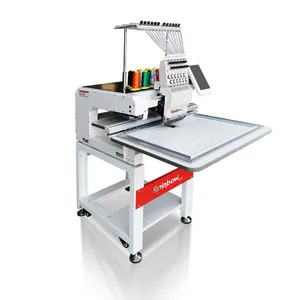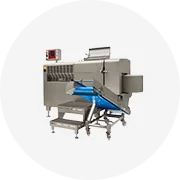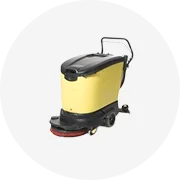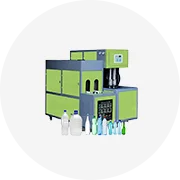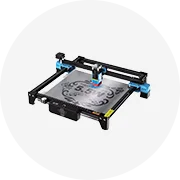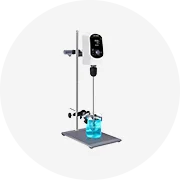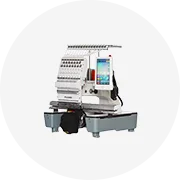Phổ biến trong ngành của bạn

2000 kg/giờ Chai nhựa PET nghiền rửa khô tái chế dòng giặt với nhãn Vật nuôi loại bỏ
10.000,00 US$ - 50.000,00 US$
Đơn hàng tối thiểu: 1 Bộ
Vận chuyển mỗi chiếc: 234.375.048,00 US$


1000 kg/giờ độ ổn định cao AWS-PET nhựa vật nuôi mảnh rửa dây chuyền sản xuất máy tái chế vật nuôi
10.000,00 US$ - 50.000,00 US$
Đơn hàng tối thiểu: 1 Cái
Vận chuyển mỗi chiếc: 74.999.900,00 US$


Hoàn toàn tự động 500-800 kg/giờ chất thải Nhựa PP/PE/ABS/PS/PC Flakes/regrinds tái chế tạo hạt Máy ACS-H
10.000,00 US$ - 50.000,00 US$
Đơn hàng tối thiểu: 1 Bộ
Vận chuyển mỗi chiếc: 17,04 US$

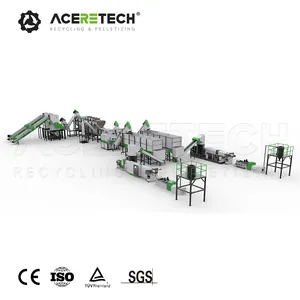
Hoàn toàn tự động 1-2t/h chất thải nhựa Chai PET nghiền tái chế máy giặt với hệ thống sấy AWS-PET
10.000,00 US$ - 50.000,00 US$
Đơn hàng tối thiểu: 1 Cái
Vận chuyển mỗi chiếc: 74.999.900,00 US$


Kitech chất thải nhựa tái chế PP PE Pet Túi Phim chai rửa dòng với Dịch vụ tốt
60.000,00 US$ - 80.000,00 US$
Đơn hàng tối thiểu: 1 Bộ


Thái lan Chai PET Mảnh Label Separator Máy Chai PET Phế Liệu Tái Chế Máy Chi Phí Của Chai PET Nhà Máy Tái Chế
9.500,00 US$ - 12.800,00 US$
Đơn hàng tối thiểu: 1 Bộ
Vận chuyển mỗi chiếc: 0,00 US$

Chương Trình Điều Khiển Nhựa Pet Chai Bàn Chải Máy Giặt Flakes Hot Máy Giặt Bìa Label Separator
56.999,00 US$ - 59.999,00 US$
Đơn hàng tối thiểu: 1 Bộ

Haorui Good Quality Label Remover PET PP Bottles label Removing Separator Machine
4.800,00 US$
Đơn hàng tối thiểu: 1 Bộ

100% PET HDPE Chai Nhựa Label Remover Máy Nhãn Separator Giá Máy Bao Gồm Zig Zag Air Phân Loại Hệ Thống
7.800,00 US$ - 7.899,00 US$
Đơn hàng tối thiểu: 1 Bộ

Máy Tái Chế Phế Liệu Xốp EPE EVA Máy Tách Nhãn PET Flakes
13.800,00 US$ - 19.800,00 US$
Đơn hàng tối thiểu: 1 Bộ

Máy Tách Nhãn Vảy Chai PET Tự Động/Máy Tháo Nhãn Chai PET
7.400,00 US$ - 7.600,00 US$
Đơn hàng tối thiểu: 1 Bộ

100% Pet HDPE chai nhựa nhãn Remover Máy Mũ nhãn tách máy bao gồm Zig Zag không khí Phân Loại hệ thống
3.190,00 US$ - 4.980,00 US$
Đơn hàng tối thiểu: 1 Bộ
Các tìm kiếm liên quan:
pet flakes tách máypet flakes dewater machinepet flakes máy chế biếnpet flakes hot washing tank machinepet mảnh để ống máymáy tách chai petmáy tách màu nhựanhà máy tách nhựa nhômmáy giết thú cưngmáy petgbộ tách nhãn mảnh cho thú cưngpet flakes tách máypet flakes dewater machinepet flakes máy chế biếnpet flakes dewatering machine

2023 tháng trước Wedo máy móc tuyệt vời nhà máy trực tiếp giá sử dụng chai PET Flakes nhãn Zig Zag separator
59.999,00 US$ - 60.000,00 US$
Đơn hàng tối thiểu: 1 Bộ

Chai PET nhãn tách Flakes rửa máy tái chế
45.000,00 US$ - 55.000,00 US$
Đơn hàng tối thiểu: 1 Bộ
Vận chuyển mỗi chiếc: 26,46 US$


Chất Thải Nhựa Chai PET Tái Chế Nhà Máy Dòng Máy Chai Nhựa Tái Chế Giá Máy
23.000,00 US$ - 69.000,00 US$
Đơn hàng tối thiểu: 1 Bộ

Chất thải Chai PET tái chế Polyester STAPLE sợi rửa chai PET Máy tái chế chai nhựa máy tái chế
30.000,00 US$ - 44.000,00 US$
Đơn hàng tối thiểu: 1 Đơn vị

Chai PET Tái Chế Máy/Máy Rửa Nhựa/Nhựa Nhà Máy Tái Chế
30.900,00 US$ - 36.300,00 US$
Đơn hàng tối thiểu: 1 Bộ

Chai Nhựa Tái Chế Máy Pet Nghiền Rửa Khô Tái Chế Dòng Pet Chai Flakes Rửa Nóng Máy Tái Chế
54.000,00 US$ - 70.000,00 US$
Đơn hàng tối thiểu: 1 Bộ

Máy Tái Chế Nhựa/Máy Tái Chế Máy Tái Chế Chất Thải/Máy Tái Chế Chai Pet Và Máy Rửa Chai
80.000,00 US$
Đơn hàng tối thiểu: 1 Bộ

Máy/Thiết Bị/Máy Tái Chế Sấy Khô Chai Nhựa PET Chất Thải Dây Chuyền Máy Giặt Tái Chế Vảy Nhựa
95.000,00 US$ - 106.000,00 US$
Đơn hàng tối thiểu: 1 Bộ
Vận chuyển mỗi chiếc: 310,00 US$

100-3000 Kg/giờ CE Tiêu Chuẩn Vật Nuôi Sạch Mảnh Dòng Giặt Nhựa Chai PET Tái Chế Máy
20.000,00 US$ - 70.000,00 US$
Đơn hàng tối thiểu: 1 Bộ

Polyester Staple Sợi Tái Chế Máy Làm/Chất Thải Chai Nhựa PET Rửa/Tái Chế Dòng/Máy/Nhà Máy
90.000,00 US$ - 95.000,00 US$
Đơn hàng tối thiểu: 1 Bộ

Nhựa Chất Thải Tái Chế Máy/Xử Lý Chất Thải Nhà Máy Tái Chế/Pet Chai Mảnh Máy Giặt Máy Nghiền
40.000,00 US$ - 50.000,00 US$
Đơn hàng tối thiểu: 1 Bộ
Vận chuyển mỗi chiếc: 10.000,00 US$

Tái chế chai PET nhãn Remover Peeler loại bỏ máy/Pet PE PP PVC chai de-ghi nhãn máy
3.250,00 US$ - 11.900,00 US$
Đơn hàng tối thiểu: 1 Bộ
Vận chuyển mỗi chiếc: 411,28 US$

Chất Thải PET Chai Nhựa Flakes Rửa Tái Chế Dòng/Máy/Nhà Máy
85.000,00 US$ - 90.000,00 US$
Đơn hàng tối thiểu: 1 Bộ

300-5000 Kg/giờ Chai PET Mảnh Rửa Nóng Tái Chế Máy Giặt Nhà Máy
37.500,00 US$ - 38.000,00 US$
Đơn hàng tối thiểu: 1 Bộ

400 kg/giờ giá tốt Chai PET nghiền máy giặt 120 hạt Máy tái chế dòng phụ tùng Cung cấp UT uzbekistan
13.688,66 US$ - 17.655,66 US$
Đơn hàng tối thiểu: 1 Bộ
Vận chuyển mỗi chiếc: 51,09 US$


Độ Chính Xác Cao Đa Chức Năng Chai Pet Nhà Máy Tái Chế Chất Thải Nhựa Máy Tái Chế
1.800,00 US$
Đơn hàng tối thiểu: 1 Bộ

Chi Phí Hiệu Quả 500-2000 kg/giờ Chất Thải Nhựa Pet Chai Mảnh Tái Chế Rửa Dòng AWS-PET
10.000,00 US$ - 50.000,00 US$
Đơn hàng tối thiểu: 1 Cái
Vận chuyển mỗi chiếc: 74.999.900,00 US$

Chai PET Máy Tái Chế/Máy Giặt Nhựa/Nhà Máy Tái Chế Nhựa
141.800,00 US$ - 142.000,00 US$
Đơn hàng tối thiểu: 1 Bộ

Dây Chuyền Thiết Bị Rửa Tái Chế Nhựa Ldpe Eps Pp Pe Chất Thải Công Nghiệp Máy Tái Chế Thực Vật Cho Phim
399,00 US$ - 1.000,00 US$
Đơn hàng tối thiểu: 1 Bộ


Máy Làm Hạt Nhựa Tái Chế Giá Máy Tái Chế Băm Nhỏ Chai Pet
4.500,00 US$ - 7.500,00 US$
Đơn hàng tối thiểu: 1 Bộ

Chai PET Nhãn Remover Tái Chế Dòng Chai PET Tái Chế Dòng Giặt Nhựa PET Làm Sạch Máy
4.500,00 US$ - 8.600,00 US$
Đơn hàng tối thiểu: 1 Bộ


Ivima 300-3000kgh Máy Tái Chế Chai PET Nhựa Thải/Dây Rửa Nóng Mảnh Vật Nuôi Tái Chế
70.000,00 US$ - 90.000,00 US$
Đơn hàng tối thiểu: 1 Bộ

Mảnh Vật Nuôi, PP, Nhãn, Sinked & Nổi Nhựa Separator & Tách Nhà Máy Xe Tăng
1.000,00 US$ - 5.000,00 US$
Đơn hàng tối thiểu: 1 Bộ

Faygo Liên Minh 500 Kg/giờ PET Máy Tái Chế/Chai Pet Nhà Máy Tái Chế/Pet Flake Dòng Giặt
48.000,00 US$ - 50.000,00 US$
Đơn hàng tối thiểu: 1 Bộ
Vận chuyển mỗi chiếc: 3.000,00 US$
Các danh mục hàng đầu
Giới thiệu về pet flakes nhãn separator máy
Nhận độc quyền. Tùy chọn pet flakes nhãn separator máy cho nhu cầu tái chế của bạn tại Alibaba.com. Với chi phí sản xuất ngày càng tăng và những lo ngại về môi trường cấp bách, nhu cầu về. pet flakes nhãn separator máy là không thể phủ nhận. Những cái này. pet flakes nhãn separator máy là lựa chọn phù hợp để biến đống rác bẩn thành mảnh hoặc viên có thể tái sử dụng.
Các. pet flakes nhãn separator máy tại Alibaba.com có thể được sử dụng để tách vụn nhôm, bao xi măng, chai nhựa, rửa và tái chế chúng .. pet flakes nhãn separator máy rất thích hợp cho các loại khác nhau bằng nhựa như PE / PP / PET / ABS, v.v. Họ phân biệt loại dựa trên mật độ của vật liệu. Khả năng xử lý của. pet flakes nhãn separator máy nằm trong khoảng từ 300 kg / giờ đến 800 kg / giờ. Tất cả các nhu cầu cần thiết liên quan đến lao động, quy mô nhà xưởng, cấp nước đều được cung cấp để bạn đưa ra quyết định sáng suốt. Thống kê chất lượng sản phẩm cuối cùng cũng được hiển thị để xem xét tùy chỉnh. Các phẩm chất liên quan đến kích thước hạt, mật độ, mức tạp chất cho phép, khả năng xử lý và hơn thế nữa, được thiết kế riêng.
The. pet flakes nhãn separator máy được thiết kế với tính năng tự động hóa cao và đầu ra cao. Cả hai điều này đảm bảo bạn không chỉ cắt giảm chi phí lao động mà còn tối đa hóa doanh thu của mình. Các. Hệ thống pet flakes nhãn separator máy cũng có tùy chọn tạm dừng khẩn cấp để tránh bất kỳ sai sót vô tình nào. Hơn nữa, chúng có bảng điều khiển màn hình LCD để dễ sử dụng và điều khiển. Các. pet flakes nhãn separator máy được tùy chỉnh cho loại chất gây ô nhiễm mà bạn đang xử lý. Có rất nhiều loại thiết bị được sử dụng trong dây chuyền lắp ráp như máy khử nước và máy rửa ma sát, mỗi loại đều có sẵn với những ưu đãi tuyệt vời.
Khám phá không thể bỏ qua. Giao dịch pet flakes nhãn separator máy chỉ có tại Alibaba.com. Nếu bạn là. nhà cung cấp và nhà bán buôn pet flakes nhãn separator máy, bạn sẽ được đáp ứng nhu cầu của mình. Mua ngay bây giờ và góp phần bảo tồn hành tinh.
Các. pet flakes nhãn separator máy tại Alibaba.com có thể được sử dụng để tách vụn nhôm, bao xi măng, chai nhựa, rửa và tái chế chúng .. pet flakes nhãn separator máy rất thích hợp cho các loại khác nhau bằng nhựa như PE / PP / PET / ABS, v.v. Họ phân biệt loại dựa trên mật độ của vật liệu. Khả năng xử lý của. pet flakes nhãn separator máy nằm trong khoảng từ 300 kg / giờ đến 800 kg / giờ. Tất cả các nhu cầu cần thiết liên quan đến lao động, quy mô nhà xưởng, cấp nước đều được cung cấp để bạn đưa ra quyết định sáng suốt. Thống kê chất lượng sản phẩm cuối cùng cũng được hiển thị để xem xét tùy chỉnh. Các phẩm chất liên quan đến kích thước hạt, mật độ, mức tạp chất cho phép, khả năng xử lý và hơn thế nữa, được thiết kế riêng.
The. pet flakes nhãn separator máy được thiết kế với tính năng tự động hóa cao và đầu ra cao. Cả hai điều này đảm bảo bạn không chỉ cắt giảm chi phí lao động mà còn tối đa hóa doanh thu của mình. Các. Hệ thống pet flakes nhãn separator máy cũng có tùy chọn tạm dừng khẩn cấp để tránh bất kỳ sai sót vô tình nào. Hơn nữa, chúng có bảng điều khiển màn hình LCD để dễ sử dụng và điều khiển. Các. pet flakes nhãn separator máy được tùy chỉnh cho loại chất gây ô nhiễm mà bạn đang xử lý. Có rất nhiều loại thiết bị được sử dụng trong dây chuyền lắp ráp như máy khử nước và máy rửa ma sát, mỗi loại đều có sẵn với những ưu đãi tuyệt vời.
Khám phá không thể bỏ qua. Giao dịch pet flakes nhãn separator máy chỉ có tại Alibaba.com. Nếu bạn là. nhà cung cấp và nhà bán buôn pet flakes nhãn separator máy, bạn sẽ được đáp ứng nhu cầu của mình. Mua ngay bây giờ và góp phần bảo tồn hành tinh.




